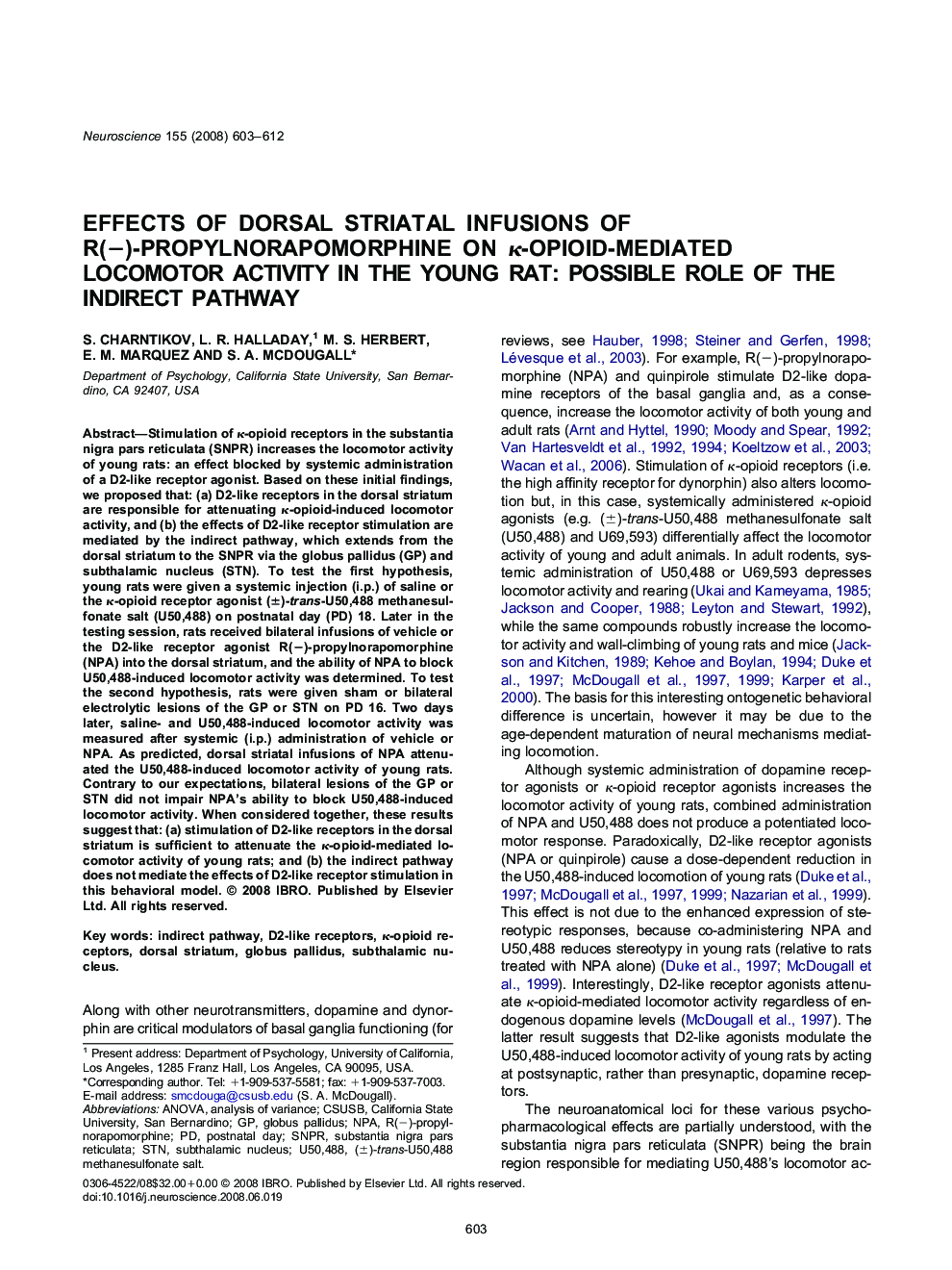| Article ID | Journal | Published Year | Pages | File Type |
|---|---|---|---|---|
| 4340714 | Neuroscience | 2008 | 10 Pages |
Stimulation of κ-opioid receptors in the substantia nigra pars reticulata (SNPR) increases the locomotor activity of young rats: an effect blocked by systemic administration of a D2-like receptor agonist. Based on these initial findings, we proposed that: (a) D2-like receptors in the dorsal striatum are responsible for attenuating κ-opioid-induced locomotor activity, and (b) the effects of D2-like receptor stimulation are mediated by the indirect pathway, which extends from the dorsal striatum to the SNPR via the globus pallidus (GP) and subthalamic nucleus (STN). To test the first hypothesis, young rats were given a systemic injection (i.p.) of saline or the κ-opioid receptor agonist (±)-trans-U50,488 methanesulfonate salt (U50,488) on postnatal day (PD) 18. Later in the testing session, rats received bilateral infusions of vehicle or the D2-like receptor agonist R(−)-propylnorapomorphine (NPA) into the dorsal striatum, and the ability of NPA to block U50,488-induced locomotor activity was determined. To test the second hypothesis, rats were given sham or bilateral electrolytic lesions of the GP or STN on PD 16. Two days later, saline- and U50,488-induced locomotor activity was measured after systemic (i.p.) administration of vehicle or NPA. As predicted, dorsal striatal infusions of NPA attenuated the U50,488-induced locomotor activity of young rats. Contrary to our expectations, bilateral lesions of the GP or STN did not impair NPA's ability to block U50,488-induced locomotor activity. When considered together, these results suggest that: (a) stimulation of D2-like receptors in the dorsal striatum is sufficient to attenuate the κ-opioid-mediated locomotor activity of young rats; and (b) the indirect pathway does not mediate the effects of D2-like receptor stimulation in this behavioral model.
